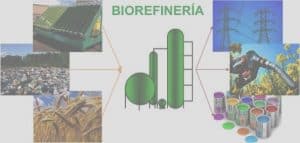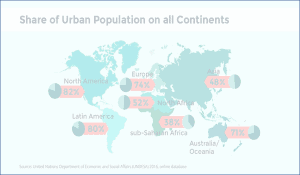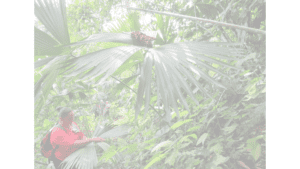Microorganisms are barely seen by the naked eye. Under this name we found different types such as bacteria, viruses, protozoa or unicellular fungi. They are “extraordinary bugs” including organisms able to metabolise complex compounds such as petroleum or to live in extreme environments like the waters of Tinto River in Spain.
Although we usually associate microorganism with diseases, less than 1% of the bacteria are true pathogens. Moreover, most of them are beneficial for us. For example, the bacteria living in the human guts are able to digest and absorb part of the food; the innocuous bacteria living on our skin compete with other microbial pathogens preventing them from colonizing the skin and therefore hampering from causing infections. In all these examples and others, these microorganisms live associated to more complex organisms stablishing very close relationships and forming “microbiomes”.
 The environment around the roots of a plant, called the rhizosphere, is where we can find the plant microbiome. The roots release compounds that attract soil microorganisms, and plants allow those to live on top or even inside of them. But why do plants invest so much energy to keep these microorganisms? In nature, nothing comes for free, and these microorganisms bring a benefit to the plant. For instance, the fungi Mycorrhizal is able to solubilize the non-usable phosphorus from soil into a different form that the plants are able to use. Furthermore, Mycorrhizae increase the surface area in contact with the soil, thus increasing the water and other nutrients uptake capacity.
The environment around the roots of a plant, called the rhizosphere, is where we can find the plant microbiome. The roots release compounds that attract soil microorganisms, and plants allow those to live on top or even inside of them. But why do plants invest so much energy to keep these microorganisms? In nature, nothing comes for free, and these microorganisms bring a benefit to the plant. For instance, the fungi Mycorrhizal is able to solubilize the non-usable phosphorus from soil into a different form that the plants are able to use. Furthermore, Mycorrhizae increase the surface area in contact with the soil, thus increasing the water and other nutrients uptake capacity.
Soil is an inhospitable place where elements as important as phosphorous or nitrogen are scarce. This is the main reason why they are used as fertilizers in agriculture. Since the 70´s green revolution, the extensive use of fertilizers has allowed to feed the world population. However, while we use seven times more fertilizers than in the 60´s, the agricultural production has barely doubled. Therefore, at this rate, fertilizers won´t be able to cover the world population’s food needs, which according to UN is expected to be greater than 9,000 million inhabitants by 2050. In addition, they are very expensive and extremely pollutant. Part of the non-absorbed fertilisers end up being dragged by the rain into the rivers and the sea, where the excess of nutrients pollutes the oceans causing problems even to the coral reefs in Australia.
 Therefore, we need a new green revolution that allows us to feed the world in 30 years time. In the last few years, the use of microorganisms as alternatives to fertilizers has been developed to increase agricultural production. The most studied example is the mutual beneficial relationship between legumes (such as soy bean, pea or peanut) and bacteria. However, this relationship is mainly restricted to legumes, which culture accounts only for 27% of the total protein production. The main crops in the world are cereals like maize, wheat or rice which production was 2530 million tons in the last couple of years, therefore requiring a large amount of nitrogen-rich fertilizers to cover current global needs. Here is where the problem arises. We need to feed more people, but we need to take care of our planet as well. How do we increase the maize or rice production in a sustainable way?: With a higher investment in research to reduce the fertilizers required to grow cereals.
Therefore, we need a new green revolution that allows us to feed the world in 30 years time. In the last few years, the use of microorganisms as alternatives to fertilizers has been developed to increase agricultural production. The most studied example is the mutual beneficial relationship between legumes (such as soy bean, pea or peanut) and bacteria. However, this relationship is mainly restricted to legumes, which culture accounts only for 27% of the total protein production. The main crops in the world are cereals like maize, wheat or rice which production was 2530 million tons in the last couple of years, therefore requiring a large amount of nitrogen-rich fertilizers to cover current global needs. Here is where the problem arises. We need to feed more people, but we need to take care of our planet as well. How do we increase the maize or rice production in a sustainable way?: With a higher investment in research to reduce the fertilizers required to grow cereals.
In the last 5 years, scientists around the world have directed their efforts to grow cereals without the need of synthetic fertilizers. This is the case of the group headed by Prof. Luis M. Rubio, from the Centro de Biotecnología y Genómica de Plantas of the Universidad Politécnica de Madrid. They have succeeded in synthetically producing the enzyme responsible for the nitrogen fixation (nitrogenase) from bacteria in yeast (“Hacia la elaboración de cereales capaces de consumir el nitrógeno del aire”), a more complex organism, and therefore more similar to plants. It is a small step but a very important one to obtain plants that do not need nitrogen fertilizers. We are in the correct path to achieve a greater agricultural production in a more sustainable way. With this type of tools, we will be able to feed the world population in 2050 and, at the same time, take care of the planet we live in. However, there is still too much to do. We need greater investment in science for this purpose.
By Dr. Beatriz Jorrín, postdoctoral researcher under the supervision of Professor Phil Poole, Plant Sciences Department, University of Oxford. Her main research line is to understand how symbiotic bacteria colonises legume roots analysing their genetic information.






